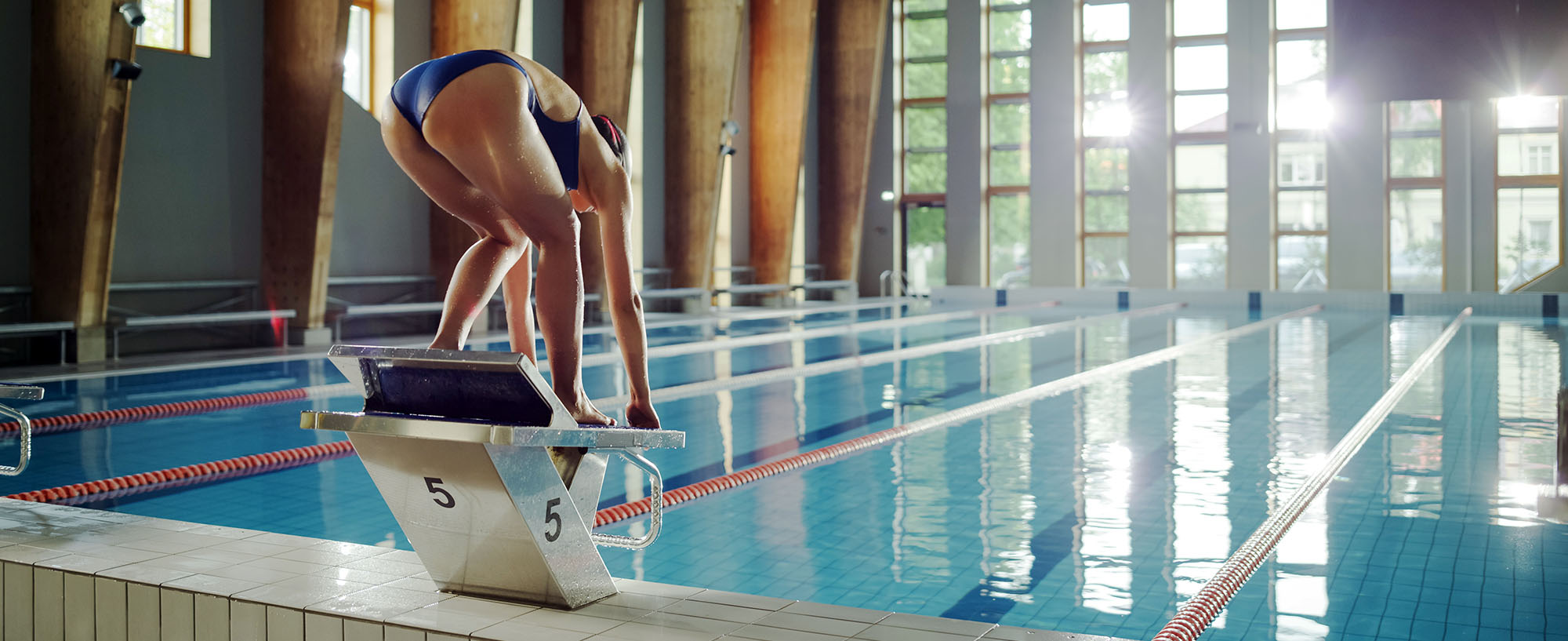Maintaining the right humidity levels in indoor pools and natatoriums is crucial for the comfort, health, and safety of the occupants as well as the structural integrity of the building. Thankfully, there are several methods and technologies that can help keep humidity within acceptable levels. We’ve created this basic primer to get you started as you plot out your own natatorium design.
Understanding Humidity
Humidity refers to the amount of moisture present in the air. It is typically measured as relative humidity (RH) and is expressed as a percentage. The ideal indoor pool humidity level falls between 50% and 60%. This range ensures a comfortable environment for swimmers and prevents issues like condensation, mold growth, and structural damage. Humidity can be calculated using a hygrometer, a device that measures the moisture content in the air.
Methods for Controlling Indoor Pool Humidity
Ventilation Systems
Proper ventilation is fundamental in controlling humidity. Mechanical ventilation systems, including exhaust fans and fresh air intake, ensure that stale, humid air is constantly replaced with fresh, dry air from outside. Heat recovery ventilation (HRV) systems are also utilized to minimize heat loss during the ventilation process.
Dehumidification Equipment
Dehumidifiers are specifically designed to remove excess moisture from the air. There are two main types: desiccant dehumidifiers and refrigerant dehumidifiers. Desiccant dehumidifiers absorb moisture using a drying agent, while refrigerant dehumidifiers cool the air, causing moisture to condense and be removed.
Pool Covers and Enclosures
Using pool covers when the pool is not in use can significantly reduce evaporation, limiting the introduction of moisture into the air. Enclosing the pool area with a retractable roof or high-quality glass walls can further control humidity levels by preventing outside air and moisture from entering the natatorium.
Proper Pool Water Temperature
Maintaining the pool water temperature within an appropriate range can minimize evaporation rates. Warmer water evaporates more quickly, increasing humidity, while cooler water reduces this effect.
Design Considerations
Architectural and engineering designs play a vital role in humidity control. Ensuring adequate space between the pool surface and the roof, using non-corrosive building materials, and incorporating proper insulation can prevent condensation and structural damage caused by high humidity levels.
Recommended Systems for Indoor Pool Humidity Control
1. Air Handling Units (AHUs)
AHUs are HVAC units equipped with advanced controls for managing temperature, humidity, and air quality. They regulate the air circulated within the natatorium, ensuring a comfortable environment for swimmers.
2. Pool Water Treatment Systems
Effective water treatment systems help maintain the pool water chemistry, preventing the formation of chloramines—a common source of unpleasant pool odors. Controlling chloramines and trichloramines lessens the need for excessive ventilation and dehumidification.
3. Humidity Control Sensors
Installing humidity sensors linked to the HVAC system allows for real-time monitoring and automatic adjustments. These sensors can activate ventilation, dehumidification, or heating systems as needed, ensuring consistent humidity levels.
This is just an introduction to the many complex factors that influence humidity in natatoriums. If you’d like to learn more, check out our comprehensive Natatorium Design Guide for more on indoor pool humidity control.
